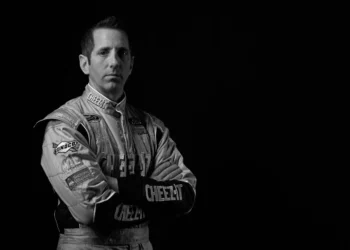The intersection of Formula 1 and NASCAR, two motorsport giants, has long intrigued fans, with many wondering if Formula 1 could adopt some of NASCAR’s signature elements, like oval racing. However, reigning three-time Formula 1 World Champion Max Verstappen has unequivocally voiced his opposition to the idea, putting an end to any speculation of ovals gracing the F1 calendar.
When asked about the possibility of Formula 1 incorporating oval tracks, Verstappen didn’t mince words. His response was as sharp as his driving:
“On an F1 calendar? No, no, not for me. I like to do it for fun, online, but not in real life. IndyCar, NASCAR—I like to watch it, but not to drive it myself.”
Verstappen’s stance reflects his preference for the technical complexity and diverse challenges offered by traditional Formula 1 circuits. While the Dutchman acknowledged his enjoyment of oval circuits in simulators and online racing, he firmly drew the line at real-life competition.
A Clear Divide Between NASCAR and F1
The debate about blending elements of NASCAR and Formula 1 has gained traction in recent years, especially as Liberty Media—the American ownership group of F1—pushes to expand the sport’s popularity in the United States. NASCAR, with its homegrown appeal and intense oval racing, has a dedicated fanbase, particularly in North America, while Formula 1 continues to grow its audience globally.
Despite their differing formats, the idea of merging aspects of the two sports has tantalized some fans. Verstappen, however, views the two disciplines as inherently different. His comments came amid ongoing discussions comparing his dominance in Formula 1 to the champions of NASCAR, a comparison he respectfully dismissed:
“Both drivers are good in their respective sports,” Verstappen said, opting to sidestep a direct comparison.
A Nod to Mugello’s Fast Corners
While Verstappen vetoed oval racing, he did champion a different circuit: Mugello. The Italian track, known for its high-speed, flowing corners, hosted an F1 race during the disrupted 2020 season and left a lasting impression on the Red Bull ace.
“Mugello. Fast corners. Just flowing tracks. So not too many lower-speed, stop-start [sections], just flowing, fast corners,” Verstappen said, highlighting his preference for tracks with a rhythm that tests a driver’s skill and car performance.
The Dutchman’s call for more high-speed, flowing circuits underscores his passion for tracks that challenge the limits of both the driver and machine, rather than the repetitive turns of oval racing.
F1’s American Expansion Without Ovals
Formula 1’s surge in popularity in the United States—fueled by Netflix’s Drive to Survive and the addition of high-profile races like the Miami and Las Vegas Grands Prix—has sparked conversations about further Americanization of the sport. Yet, as Verstappen’s comments suggest, a move toward oval circuits is unlikely.
While NASCAR thrives on its uniquely American appeal and adrenaline-pumping oval tracks, Formula 1’s identity lies in its diversity of circuits, from street tracks like Monaco to historic venues like Silverstone. The logistics and technical demands of oval racing would also pose challenges for F1 cars, designed for intricate, multi-turn layouts.
The Verdict
Max Verstappen’s blunt dismissal of ovals on the F1 calendar reaffirms the sport’s commitment to its roots. While NASCAR and Formula 1 continue to captivate millions with their distinct styles, the reigning F1 champion made it clear: he’s not ready to trade the complexities of Suzuka, Spa, or Monza for the high banks of Daytona or Talladega.
As Formula 1’s American presence grows, Verstappen’s preference for flowing, technical tracks like Mugello offers a roadmap for preserving the sport’s identity while exploring new frontiers. For now, it seems, F1 fans can enjoy ovals from the stands—or the simulator—rather than as a staple of the Grand Prix calendar.










